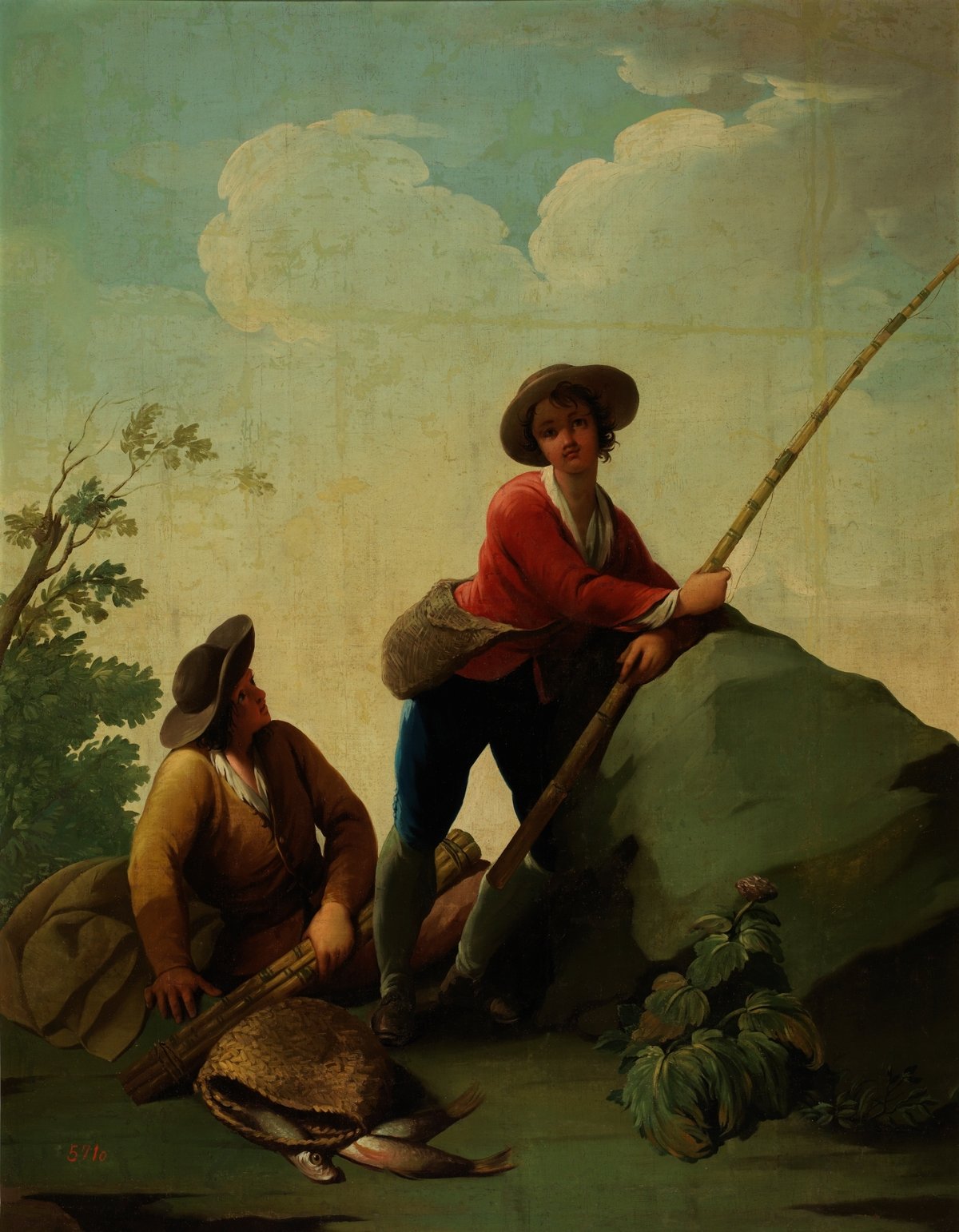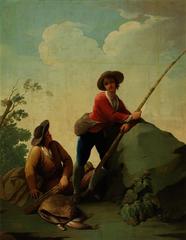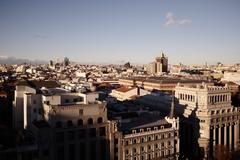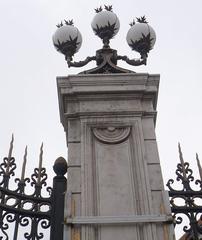
Palacio de Buenavista Madrid Visiting Hours, Tickets, and Historical Sites Guide
Date: 15/06/2025
Introduction
Nestled near the iconic Plaza de la Cibeles, the Palacio de Buenavista stands as a distinguished emblem of Spanish history, architecture, and culture. Originally conceived as a royal retreat in the 16th century, it evolved into a grand aristocratic residence and now serves as the headquarters of the Spanish Army. The palace’s neoclassical architecture, historic gardens, and connections to art masters like Goya and Velázquez make it a unique window into Spain’s aristocratic and military heritage. For visitors interested in Madrid’s historical sites, understanding the palace’s visiting hours, ticketing process, and accessibility is essential. This comprehensive guide offers detailed insights into the palace’s origins, artistic legacy, architectural features, visitor information, and nearby attractions to ensure an enriching experience (esmadrid.com, COPE, Nomadic Matt).
Contents
- Introduction
- Historical Overview: Origins to Present
- Artistic and Architectural Heritage
- Visiting Information: Hours, Tickets, Security
- Special Events & Guided Tours
- Accessibility and Visitor Tips
- Nearby Attractions
- Frequently Asked Questions (FAQ)
- Visual Highlights
- Conclusion
Historical Overview: Origins to Present
16th–18th Centuries: Royal Roots and Aristocratic Patronage
The palace’s origins can be traced to the 16th century, when the “Altillo de Buenavista” was gifted to King Felipe II by Gaspar de Quiroga, the Archbishop of Toledo. Initially a rural retreat for the royal family, it later passed through the hands of Spanish nobility, including Isabel de Farnesio. In 1769, the 12th Duke of Alba acquired the estate, and under the 13th Duchess of Alba, María Teresa Cayetana de Silva, the original structure was replaced with a new neoclassical palace designed by Pedro de Arnal and completed in 1777. The gardens, influenced by French and Italian styles, became a defining feature (Wikipedia, esmadrid.com).
19th Century: Political Change and State Ownership
After the Duchess of Alba’s death, the property was acquired by the Ayuntamiento de Madrid and gifted to Manuel Godoy. During the Napoleonic occupation, there were plans to establish an art museum (Museo Josefino) in the palace, though these were never realized. In 1816, the palace was transferred to the Spanish Army, becoming the Ministry of War headquarters in 1847 and, after numerous expansions, the present-day General Headquarters (Wikipedia, ejercitotierra.blog).
20th–21st Centuries: Military Headquarters and Living History
The palace has been central to Spanish political and military history, hosting key councils during the fall of the monarchy and the advent of the Second Republic. Notably, it was the first public building in Madrid to be equipped with electric lighting in 1882, a testament to its role as a pioneer in technological advancement (ejercitotierra.blog).
Artistic and Architectural Heritage
Neoclassical Design and Urban Symbolism
Palacio de Buenavista exemplifies late 18th-century neoclassical architecture, with a symmetrical façade, Ionic columns, and restrained ornamentation. Its urban presence on Plaza de la Cibeles anchors the palace as a civic and cultural landmark. Built with local granite and limestone, it blends seamlessly into Madrid’s architectural tradition (Nomadic Matt, Monumenta Madrid).
The palace’s U-shaped cour d’honneur and grand staircase reflect Enlightenment ideals of rationality and order. The gardens, recognized for their botanical diversity, include rare species such as the first ginkgo biloba planted in Madrid (ejercitotierra.blog).
Artistic Collections and Interior Decoration
Historically, the palace housed masterpieces by Velázquez, Raphael, and Goya, commissioned or collected by the House of Alba. While many artworks have relocated to international museums, the interiors retain historic tapestries, period furnishings, and crystal chandeliers from the Royal Factory of La Granja. The grand staircase is adorned with a laurel crown memorializing military victories (ejercitotierra.blog).
Conservation and UNESCO Status
In recognition of its architectural and cultural value, Palacio de Buenavista is included within the UNESCO World Heritage-listed Paseo del Prado and Retiro Park cultural landscape (UNESCO). Ongoing restoration ensures the preservation of its neoclassical character while accommodating contemporary uses.
Visiting Information: Hours, Tickets, Security
Visiting Hours and Ticketing
Due to its function as the Spanish Army headquarters, the palace is open to the public only during special guided tours, typically scheduled on Wednesday mornings and during cultural events (e.g., European Heritage Days). Admission is free, but advance reservation is required (esmadrid.com, miviaje.com).
To reserve a visit:
- Email [email protected] with a completed registration form.
- Await confirmation; high demand may result in waitlisting.
Security and Entry
As an active military facility, the palace enforces strict security:
- Bring valid government-issued photo ID.
- Arrive 15–20 minutes early for security checks.
- Photography is generally prohibited inside, except in designated areas with guide permission.
Accessibility
Due to the historic nature of the building, accessibility is limited. Some adaptations exist, but not all areas are accessible for visitors with reduced mobility. Inquire about accommodations when booking (esmadrid.com).
Special Events & Guided Tours
Guided Tours
All visits are guided, providing historical context and architectural insights. Tours highlight notable rooms such as the Salón Teniers, Salón Goya, and Salón de Embajadores, with artwork by Goya, Vicente López, and Madrazo, plus decorative arts from the Royal Factory of Santa Bárbara (comunidad.madrid PDF). Tours are primarily in Spanish; English-speaking guides may be available upon request.
Changing of the Guard Ceremony
Held on the last Friday of each month, the Changing of the Guard is open to the public (January–April and October–November at 12:00 PM; May, June, and September at 11:00 AM). Arrive early for a good view (esmadrid.com).
Accessibility and Visitor Tips
- Dress Code: Smart casual attire is expected.
- Conduct: Respect the palace’s historic and military status; follow guide and security instructions.
- Booking: Plan weeks or months in advance due to limited spots.
- Language: Specify language preferences when booking, but availability is not guaranteed.
- Group Visits: All members must be registered and bring identification.
Nearby Attractions
The palace’s central location offers easy access to:
- Plaza de Cibeles and Palacio de Cibeles (City Hall)
- Paseo del Arte: Prado, Thyssen-Bornemisza, Reina Sofía museums
- Instituto Cervantes and Casa de América
- Cafés, restaurants, and boutiques in Justicia and Salesas neighborhoods
Frequently Asked Questions (FAQ)
Q: How can I visit the Palacio de Buenavista?
A: Guided tours are available by prior appointment, usually on Wednesday mornings or during special events. Email [email protected] for registration.
Q: Is there an entrance fee?
A: No, visits are free, but advance registration is required.
Q: Is the palace accessible for people with disabilities?
A: Accessibility is limited; inquire about accommodations when booking.
Q: Can I take photographs inside?
A: Photography is generally prohibited except in designated areas with explicit permission.
Q: Is there parking at the palace?
A: No dedicated parking; use public transport or nearby paid parking facilities.
Visual Highlights
- Palacio de Buenavista exterior with Plaza de Cibeles in the background
- Interior of Salón de Embajadores with equestrian sculptures
- Changing of the Guard ceremony at the palace
(For images, see Monumenta Madrid documentation and official tourism sites.)
Conclusion
The Palacio de Buenavista is a living monument to Madrid’s royal, artistic, and military heritage. Its neoclassical architecture, storied interiors, and ceremonial traditions offer a rare journey through centuries of Spanish history. Although access is limited, guided tours and public events like the Changing of the Guard provide unique opportunities to experience this historic landmark. Plan ahead, secure your reservation, and embrace the layered legacy of Palacio de Buenavista as part of your Madrid exploration.
For more detailed guides on Madrid’s historical sites, including ticket booking and travel tips, explore our related articles. Download the Audiala app for up-to-date information, guided tours, and insider content on Spain’s cultural landmarks. Follow us on social media for the latest news and events.




































































































